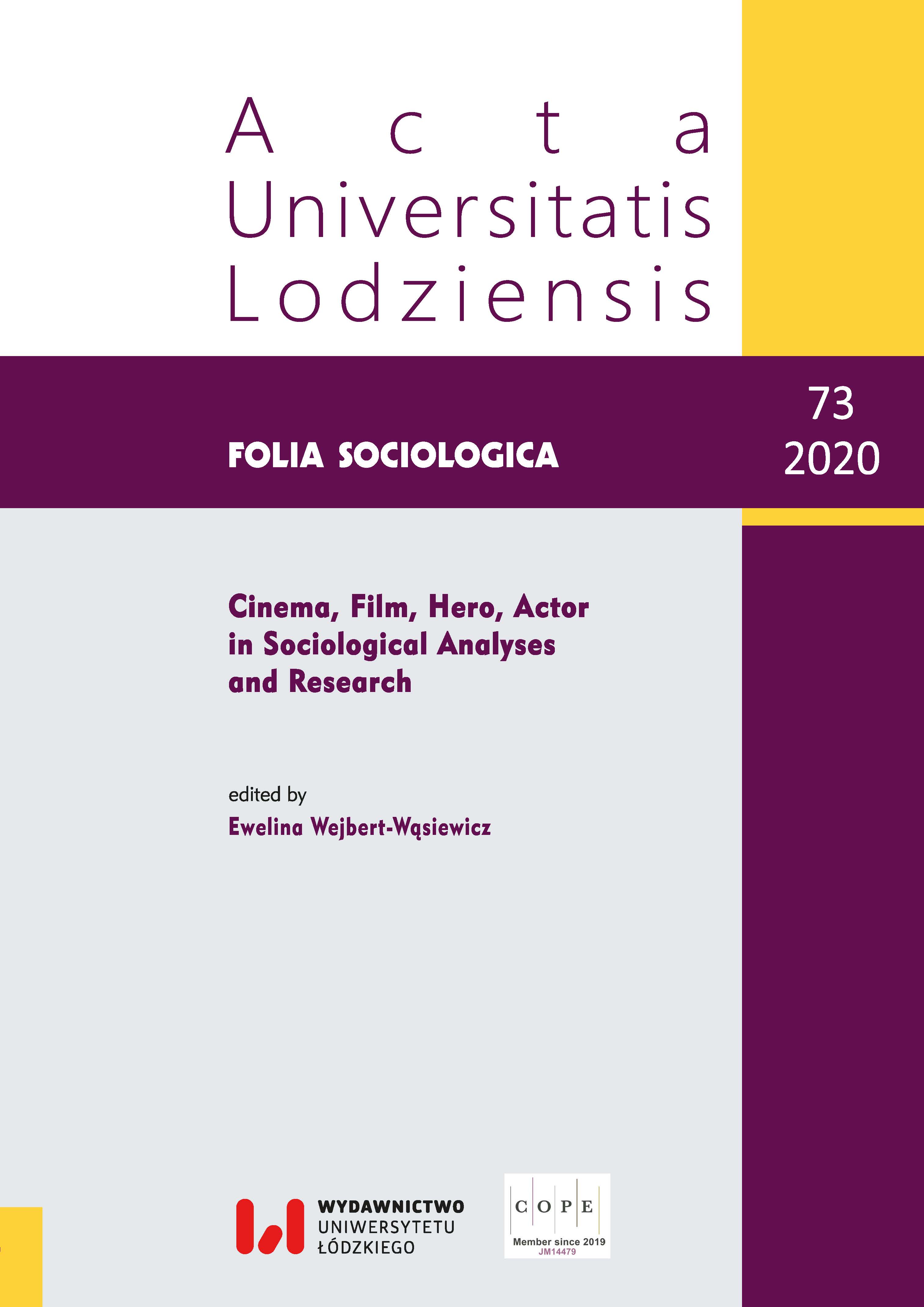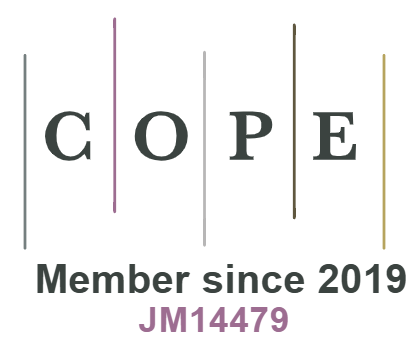Visual sociological research using film and video, on the example of urban studies
DOI:
https://doi.org/10.18778/0208-600X.73.01Keywords:
film and sociology, sociology of film, visual research, sociological film, cityAbstract
The use of film and video in sociological research, or social sciences in general, has a long and well-established tradition. Motion pictures have, on the one hand, been the object of analysis, as in the case of sociology of film, and, on the other, they have been used as a research tool. Moreover, films can be scientific statements in their own right, as is the case with sociological film.
The use of visual methods based on both still and moving pictures works very well for exploring the physical and social space of the city. The article looks at ways of using films and the actual process of obtaining film data in sociological research. Works featuring urban themes will be considered as special cases to illustrate the author’s reflections. It is noteworthy that early cinema already showed urban space, as exemplified in the films by the Lumière brothers who, incidentally, treated their motion pictures primarily as a scientific tool.
City-related topics appear in research by film sociologists who analysed films featuring urban themes, among other things. Later, sociologists themselves began to use cameras in their studies and teaching. One way of using a camera for these purposes is simply to record observations of certain places and people’s behaviour. These video recordings are subsequently analysed, applying various methods developed in the field of sociology and other sciences. Another technique, well-suited for exploring urban space, is a mobile camera, used for example for video tours, as introduced by Sarah Pink. And, finally, sociological film focusing on the city plays a vital role in social research.
References
Albrecht G.L. (1985), Videotape Safaris: Entering the Field with a Camera, “Qualitative Sociology”, no. 4, pp. 325–344.
Google Scholar
DOI: https://doi.org/10.1007/BF00988843
Altenloh E. (1914), Zur Soziologie des Kino. Die Kino-Unternehmung und die sozialen Schichten ihrer Besucher, Eugen Diederichs, Jena.
Google Scholar
Birri F. (1986), The Roots of Documentary Realism, [in:] J. Burton (ed.), Cinema and Social Change in Latin America: Conversations with Filmmakers, University of Texas Press, Austin.
Google Scholar
Bohnsack R. (2007), Die dokumentarische Methode in der Bild- und Fotointerpretation, [in:] R. Bohnsack, I. Nentwig-Gesemann, A.-M. Nohl (eds.), Die dokumentarische Methode und ihre Forschungspraxis. Grundlagen qualitativer Sozialforschung, VS Verlag für Sozialwissenschaften, Wiesbaden.
Google Scholar
DOI: https://doi.org/10.1007/978-3-531-90741-3
Bohnsack R. (2009), Qualitative Bild- und Videointerpretation. Die dokumentarische Methode, Verlag Barbara Budrich, Opladen, Farmington Hills.
Google Scholar
DOI: https://doi.org/10.1007/978-3-8349-9441-7_20
Bystroń J.S. (1975), Socjologia kina, [in:] J. Bocheńska (ed.), Polska myśl filmowa. Antologia tekstów z lat 1898–1939, Zakład Narodowy im. Ossolińskich – Wydawnictwo Polskiej Akademii Nauk, Wrocław–Warszawa–Kraków–Gdańsk.
Google Scholar
Caldwell G. (2011), Zastosowanie wideo do celów rzecznictwa, transl. K. Olechnicki, [in:] M. Frąckowiak, K. Olechnicki (eds.), Badania wizualne w działaniu. Antologia tekstów, Fundacja Nowej Kultury Bęc Zmiana, Warszawa.
Google Scholar
Czeczot-Gawrak Z. (1977), Zarys dziejów teorii filmu pierwszego pięćdziesięciolecia 1895–1945, Zakład Narodowy im. Ossolińskich, Wydawnictwo Polskiej Akademii Nauk, Wrocław.
Google Scholar
Drozdowski R., Kaczmarek J., Krajewski M. (2006), Otwarta Baza Danych Wizualnych, [in:] J. Kaczmarek, M. Krajewski (eds.), Co widać?, Wydawnictwo Naukowe Uniwersytetu im. Adama Mickiewicza, Poznań.
Google Scholar
Dudek K.J. (2009), Filmy weselne. Nowe media a zmiany w rytuale, “Kultura i Społeczeństwo”, no. 4, pp. 117–130.
Google Scholar
DOI: https://doi.org/10.35757/KiS.2009.53.4.5
Heath C., Knoblauch H., Luff P. (2000), Technology and social interaction: the emergence of ‘workplace studies’, “British Journal of Sociology”, no. 2, pp. 299–320.
Google Scholar
DOI: https://doi.org/10.1111/j.1468-4446.2000.00299.x
Heusch L. de (1962), Cinéma et sciences sociales. Panorama du film ethnographique et sociologique, [in:] Rapports et documents de sciences sociales, no. 16.
Google Scholar
Kaczmarek J. (2011), Gubin i Guben – miasta na pograniczu: socjologiczne studium sąsiedztwa, Wydawnictwo Naukowe Uniwersytetu im. Adama Mickiewicza, Poznań.
Google Scholar
Kaczmarek J. (2014), Zobaczyć społeczeństwo: film i wideo w badaniach socjologicznych, Wydawnictwo Naukowe Uniwersytetu im. Adama Mickiewicza, Poznań.
Google Scholar
Konecki K.T. (2012), Czy ciało jest świątynią duszy? Współczesna praktyka jogi jako fenomen psychospołeczny, Difin, Warszawa.
Google Scholar
Kurt R. (2010), Diener zweier Damen. Videobasierte Sozialforschung zwischen Datendokumentation und Filmproduktion, [in:] M. Corsten, M. Krug, C. Moritz (eds.), Videographie praktizieren: Herangehensweisen, Möglichkeiten und Grenzen, VS Verlag für Sozialwissenschaften, Wiesbaden.
Google Scholar
DOI: https://doi.org/10.1007/978-3-531-92054-2_8
Lomax H., Casey N. (1998), Recording Social Life: Reflexivity and Video Methodology, “Sociological Research Online”, no. 2, http://www.socresonline.org.uk/3/2/1 (accessed 8.10.2019).
Google Scholar
DOI: https://doi.org/10.5153/sro.1372
Mitchell W.J.T. (2009), Zwrot piktorialny, “Kultura Popularna”, no. 1, pp. 4–19.
Google Scholar
Moritz C. (2010), Die Feldpartitur. Mikroprozessuale Transkription von Videodaten, [in:] M. Corsten, M. Krug, C. Moritz (eds.), Videographie praktizieren: Herangehensweisen, Möglichkeiten und Grenzen, VS Verlag für Sozialwissenschaften, Wiesbaden.
Google Scholar
DOI: https://doi.org/10.1007/978-3-531-92054-2_7
Murray L. (2012), Patrząc na i patrząc wstecz: wizualizacja w badaniach nad przemieszczaniem się, transl. A. Dzik, [in:] M. Bogunia-Borowska, P. Sztompka (eds.), Fotospołeczeństwo. Antologia tekstów z socjologii wizualnej, Wydawnictwo Znak, Kraków.
Google Scholar
Pauwels L. (2011), Zwrot wizualny w badaniach i komunikacji wiedzy. Kluczowe problemy rozwijania kompetencji wizualnej w naukach społecznych, transl. M. Frąckowiak, [in:] M. Frąckowiak, K. Olechnicki (eds.), Badania wizualne w działaniu. Antologia tekstów, Fundacja Nowej Kultury Bęc Zmiana, Warszawa.
Google Scholar
Pink S. (2009), Etnografia wizualna. Obrazy, media i przedstawienie w badaniach, transl. M. Skiba, Wydawnictwo Uniwersytetu Jagiellońskiego, Kraków.
Google Scholar
Pink S. (2011), Uruchamiając etnografię wizualną. Wytwarzanie szlaków, miejsc i obrazów, transl. Ł. Rogowski, [in:] M. Frąckowiak, K. Olechnicki (eds.), Badania wizualne w działaniu. Antologia tekstów, Fundacja Nowej Kultury Bęc Zmiana, Warszawa.
Google Scholar
Reichertz J., Englert C.J. (2011), Einführung in die qualitative Videoanalyse. Eine hermeneutisch-wissenssoziologische Fallanalyse, VS Verlag für Sozialwissenschaften, Wiesbaden.
Google Scholar
DOI: https://doi.org/10.1007/978-3-531-92053-5
Ruby J. (2011), Kilka opowieści z Oak Park: eksperymentalna wideoetnografia, transl. W. Rapior, [in:] M. Frąckowiak, K. Olechnicki (eds.), Badania wizualne w działaniu. Antologia tekstów, Fundacja Nowej Kultury Bęc Zmiana, Warszawa.
Google Scholar
Saryusz-Wolska M. (2007), Berlin: filmowy obraz miasta, Rabid, Kraków.
Google Scholar
Sooryamoorthy R. (2011), Kulisy kręcenia filmów badawczych w socjologii, transl. M. Brzozowska-Brywczyńska, [in:] M. Frąckowiak, K. Olechnicki (eds.), Badania wizualne w działaniu. Antologia tekstów, Fundacja Nowej Kultury Bęc Zmiana, Warszawa.
Google Scholar
Wagner-Willi M. (2007), Videoanalysen des Schulalltags. Die dokumentarische Interpretation schulischer Übergangsrituale, [in:] R. Bohnsack, I. Nentwig-Gesemann, A.-M. Nohl (eds.), Die dokumentarische Methode und ihre Forschungspraxis. Grundlagen qualitativer Sozialforschung, VS Verlag für Sozialwissenschaften, Wiesbaden.
Google Scholar
Downloads
Published
How to Cite
Issue
Section
License

This work is licensed under a Creative Commons Attribution-NonCommercial-NoDerivatives 4.0 International License.










